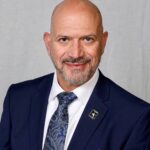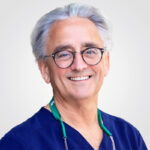by Dr. Satish Pai

Snoring during sleep is fairly common among people of all ages, but you shouldn’t just assume it’s normal. Adults who snore heavily or loudly may be suffering from sleep apnea, and the same may be true for a child who snores or has noticeable breathing sounds when they’re asleep.
Snoring is usually the most noticeable indicator of Obstructive Sleep Apnea (OSA), which is far from harmless. In addition to disturbing bed partners and family members, sleep apnea can have a wide range of long-term side effects on physical and mental health. These are particularly worrisome when they affect children.
While OSA needs to be diagnosed by a specialist, orthodontists are well-placed to diagnose growth and development problems that increase the risk of sleep apnea. They can also help devise an effective strategy for treatment.
What Are the Signs and Symptoms of Sleep Apnea in Children?
Some common warning signs of childhood sleep apnea include:
- Snoring, choking, gasping or snorting during sleep
- Mouth breathing, difficulty breathing, or pauses in breathing
- Grinding or clenching of teeth during sleep, which may lead to jaw joint pain or clicking/popping sounds in the jaw
- Complaints of restless/poor sleep, daytime headaches, morning fatigue, drop in concentration and lack of energy during the day
- Secondary signs include nightmares/night terrors, bedwetting, trouble paying attention, behavioral issues, and learning problems
What Causes Obstructive Sleep Apnea in Children?
There are many possible causes of childhood sleep apnea, including:
- Enlarged structures causing obstruction in the back of the throat, such as the tongue and tonsils, or in the back of the nose, such as adenoids.
- Growth deformities in the upper jaw or airway, such as a narrow palate or small patent airway, can also block air flow to the lungs.
- Hay fever and long-term allergies, childhood obesity and low muscle tone or weak muscles may also contribute to sleep apnea.
Effective Orthodontic Treatment Strategies for Childhood Sleep Apnea
Sleep apnea is a medical condition that requires proper diagnosis by an ENT or sleep specialist. After diagnosis, the treatment for OSA will depend on the severity as well as underlying causes of the condition. In many cases, an orthodontist can help with prevention and treatment.
Here’s how orthodontic strategies can help with childhood OSA:
- Orthodontists and other dental health professionals play a key role in diagnosing sleep disorders, since they tend to be in contact with their patients more frequently than other health professionals. They can ensure that every patient is screened for OSA and other breathing disorders, no matter their age.
- As a result of their specialist education and experience in facial growth and development, orthodontists are also in a unique position to identify sleep-related breathing disorders in patients of any age. They are also trained to guide the growth of various facial structures in younger patients.
- Almost half of all patients with obstructive sleep apnea have abnormalities in the bony structure around the airway, which could be corrected with early orthodontic treatment. This could potentially prevent and in some cases reverse the underlying causes of OSA in children as well as adolescents and adults.
- Early orthodontic treatment for expanding the upper jaw or upper arch, advancing the mandible and otherwise modifying the bony structure of the face could help manage the condition. This can also eliminate clenching and grinding of teeth during sleep, or other habits that are associated with childhood sleep apnea.
- Mandibular advancement, maxillomandibular advancement and slow or rapid maxillary expansion (RME/SME) can be combined with orthodontics to expand the airway. These techniques help with reducing resistance in the nasal airway, normalizing tongue position, and reducing or eliminating OSA symptoms.
- An orthodontist can also use oral appliance therapy (OAT) to improve breathing patterns for sleep apnea treatment in children and older patients. They may also suggest removal or tonsils/adenoids if necessary, and refer patients with serious breathing disorders or behavioral problems to a specialist physician.
Orthodontists are well-versed at managing OSA with dental appliances or modifications to the facial structure. As such, they are ideally suited for working as part of multi-disciplinary team for sleep apnea treatment.
What Should An Orthodontist Do?
By asking critical questions while examining patients, orthodontists and other dental health experts can help with the diagnosis of developmental problems that may lead to sleep apnea.
It’s critical to screen every patient for sleep-related breathing problems such as OSA, no matter how young they may be. Ask parents to make note of sleep, snoring and breathing patterns in children before bringing them in for a checkup. Most importantly, ensure that a specialist confirms the diagnosis before you commence any treatment.



